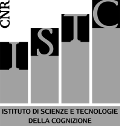This chapter illustrates the functional and anatomical alterations that occur in patients affected by post-traumatic stress disorder (PTSD). Most of these studies have been carried out over the last three decades with advanced neuroimaging techniques and have contributed significantly to describing the model of neurobiological changes underlying PTSD, implying an unbalance between hyperactivation of the amygdala following a traumatic event and the resulting inhibitory action of the prefrontal cortex. The findings of neuroimaging studies in most of the regions whose functional and anatomical changes account for PTSD symptoms will be described as well as the implication of these changes in the disorder of the three main brain connectivity networks.
Neurobiology of Post-traumatic Stress Disorder
Tipo Pubblicazione:
Contributo in volume
Publisher:
Springer, Berlin Heidelberg New York, DEU
Source:
PET and SPECT in Psychiatry, edited by Dierckx R, Otte A, de Vries E, van Waarde A, pp. 1–35. Berlin Heidelberg New York: Springer, 2021
info:cnr-pdr/source/autori:Carletto S, Panero M, Cavallo M, Pagani M/titolo:Neurobiology of Post-traumatic Stress Disorder/titolo_volume:PET and SPECT in Psychiatry/curatori_volume:Dierckx R, Otte A, de Vries E, van Waarde A/editore:
Date:
2021
Resource Identifier:
http://www.cnr.it/prodotto/i/423755
Language:
Eng


